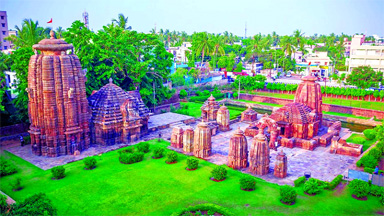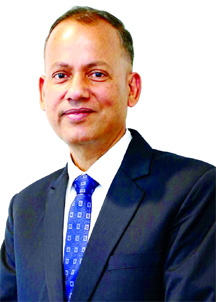

Odisha, located on the eastern coast of India, has a rich and diverse history and culture that spans thousands of years. Known for its ancient temples, vibrant art forms, classical dances, and unique festivals, Odisha is a land of deep cultural significance and historical importance. Since time immemorial, Odisha has been the most sacred soil for the Hindus in the whole of India. This holy land has been variously known throughout Indian history, as well as in tradition, as Kalinga,Utkal, and latterly as Odisha, in accordanceto the eponymous tribe’s pre-dominance at particular time. The earliest to inhabit the land were the Kalingas.
At the down of Indian history Kalinga was already a famous and formidable political power. The Kalingas have known all over India for their personal bravery, their elephants, and their maritime trade colonies. In 260 BC, the Mauryan Emperor, Ashoka invaded Kalinga and fought one of the greatest wars of ancient history. History narrates how the bravery of the Kalingas, resulting in unspeakable carnage turned Ashoka, the terrible (Chandasoka) into Ashoka, the pious (Dharmasoka). Ashoka then renounced war, became Buddhist, and preached peace and non-violence in and outside India.
In the first century BC the Kalinga Emperor, Kharavela conquered vast territories that collectively came to be called the Kalinga Empire.By the 5th -6th Centuries AD this land were inhabited by a new tribe called odras. It is these odras who gave a new individuality to the eastern State, endowing her not only with a language but a pattern of life distinct in all respect from those of neighbours all around. Thus, the ancient Utkal and still more ancient Kalinga came to be known atlast as only Odisha or Odra-desa, the land of Odras. Whether called Kalinga, Utkal, or Odisha, the traditional boundaries of this land of the Odias ,were always taken to be the river Ganga in the north and river Godavari in the south. Odisha was ruled by the powerful Bhauma-Kar dynasty during the 8-10th centuries followed by the Soma Kings until 11th century. Construction of the 11th century Grand temple at Lingaraj at Bhubaneswar, the greatest Shaiva Monument of India, was begun by the Soma king Yayati.
The most significant medieval rulers of Odisha were from the Ganga dynasty. During this period Odisha’s culture particularly its art and architecture, flourished. The Ganga ruler Anantavarman Chodagangadeva(1078-1140) begun the construction of the magnificent Jagannath temple at Puri which was finished by his son Anangabhimadeva.
His son Narasinghadeva I (1238-64) built the Sun temple of Konark which is one of the finest specimens of Hindu architecture, and is declared as UNESCO World Heritage Site.
In the13th& 14th centuries when much of India came under the Muslim powers, independent Odisha remained a citadel of Hindu Religion, Philosophy, Art, and Architecture. The Gangas were succeeded by the Surya Dynasty. Its founder Emperor, King Kapilendradeva(1435-66) built a vast empire Spanning from ‘Ganga’ Riverin the North to the ‘Cauvery’ Riverin the South, Gulbarga (Karnataka) in the West. After the death of last Surya King Prataprudradeva in 1540, the Odisha’s power declined and in 1568 when King Mukunda Harichandan was killed by the treachery of his own general, Odisha lost its independence to the Afghan Rulers.
Odisha was annexed by the Mughals in the late 16th century, but the region retained its cultural identity despite external influences. Odisha came under British Rule in the early 19th century and like much of India faced social, political, and economic upheavals.The region participated actively in Indian freedom movements leading resistance against British Rule.Only few years after British Occupation, the Odiyas raised into rebellion against the British under the leadership of Jaya Krushna Rajguru . This is the earliest Indian freedom struggle against the British Rule popularly known as ‘PaikaBidroha’.
Under British Rule the Odisha was vivisectedinto three parts and faced major political upheavals. It was on April, 1st on 1936 under the able leadership of Madhusudan Das and Maharaja Sreeram Chandra Bhanja Deo of Mayurbhanj,Odisha was unified on a linguistic basis and constituted into a separate province.Odisha became a State of India in 1950.
Odisha has become, through ages, an extremely interesting melting-pot of races, languages and cultures and regarded as excellent example of cultural integration.The centre and the very fountainhead of odia culture has all along been Lord Jagannath of Puri. The cult of Jagannath inspired Odisha’s own native systems of Dance, Music and Songs.
Right from the rough and simple caves on the twin hills of Khandagiri and Udayagiri to the World-famous Sun Temple of Konarkincluding famous Lord Jagannath Temple at Puri, Odisha’s variousgigantic architectural and sculptural enterprises speaks the eternal language of beauty, endurance,and devotion. The distinctive Kalinga style of architectures are characterized by intricately carved sculptures, high spires, and vast courtyards. The Konark Temple built as a chariot for the Sun God withWheels and Horsesis an architectural marvel.
The famous shrine of Jagannath at Puri was the very Home of what is now known AS the Odishi Dance. It is one of the classical dance forms of India.It is known for its graceful movements, intricate footwork and expressive gesture. It is through Odishi Dance that classical Odia Songs known as Odishi Sangeetoriginated. The Odisha Sangeet is Associated with the traditional temple rituals and famous for its melodic and rhythmic beauty. Odisha is also a home to a variety of Folk Dances and Music Forms. The Gotipua Dance is a traditional dance performed by the Young Boys and Chhau Dance is a Martial Art form performed during festivals particularly in Mayurbhanj.
Straddling the road between North and South India, on the east coast Odisha has naturally evolved an eclectic culture. The very symbol of this synthesis is Lord Jagannath of Puri. His annual sojourn with his brother Balabhadra and sister, Subhadra on massive chariots known as Rath Yatra (Car Festival) is one of the most famous and grand festivals in India, Held annually it attracts millions of devotees from all over the World.
Culturally Odisha is the seat Indo-Aryan style in its purest form. There is least vestige of foreign influence. It has maintained its native purity marvellously, being nurtured and reared on the very soil where it grew, without any extraneous aid.The Pattachitra painting, a traditionalstyle of painting on cloth or dried palm leaves, depicting mythological themes. This reflects Odisha’s World Famous architectural and sculptural glory.
The silver filigree works of fine silver jewellery made using intricate wire work and the unique style of Handloom weaving where both the warp and waft threads are dyed before weaving to create intricate patterns, showcase the super works of art symbolising the creative power of the Odia people.
The Temple of Jagannath also sets the standard of Orissa cuisine and is known for its simplicity and staple diet like the Holy Mahaprasad (Great Blessing) of Jagannath.It was simple wholesome and testy. Odisha, with its vibrant cultural heritage, ancient Temples, classical Dance and Unique Art Forms is a place where the past and the present coexist harmoniously. Its history, shaped by dynasties, invaders, and local traditions, is reflected in its architecture, customs and festivals. Today, Odisha continues to maintain its rich cultural identity while contributing to India’s diversity.
(Mr. Prasanta Kumar Tripathy is the Chief Executive Officer, State Bank of India, New York Branch)





Be the first to comment